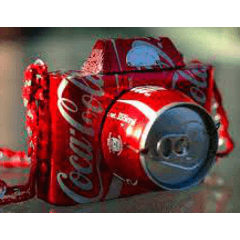Shading A Realistic Illustration With Clip Studio Paint
Lately, I've noticed lots of illustration of women with red noses, I like the effect but this doesn't normally happen, except when white people do, cry, feels ashamed, are drunk, cold, or have the flu… so I decided to create an illustration of a crying woman, this doesn’t mean anything besides that I want a red nose illustration.
I record the entire process of the illustration and it was about 3 hours, in this youtube video, you can see the summary of my process to achieve this illustration.
First tip, use of flats. This technique is one of the strong points of using Clip Studio, because you can select your flats from any layer, and is not necessary to be in the flat layer to select your flats. For the selection of the flats, you can use the “select color” sub tool in the autoselect tool and check the “reference layer” button.
To create the flats its better if your drawing is in a vector layer because it’s possible to use “fill up to vector path” and “Include vector path” to create fill under the drawing lines. The “reference layer” button needs to be press in the vector layer.
In the fill tool, select “Refer other layers”, verify in the tool properties that the “Reference layer” is checked, and use the option “Close gap” to avoid the overfill in an open drawing. It is VERY IMPORTANT to uncheck the Anti-aliasing because it creates semitransparent colors impossible to select. Then you can fill the areas using random colors, remember to zoom in when necessary to avoid unfilled spots.
To try the flats change the “Reference layer” to the layer of the flats, use the “select color”, them is possible to select any area no matter that the colors are not joined. So you can see how powerful this method is. Below is shown the exact time where the flatting is explained in the video of shading for realistic illustrations.
The first step for a good shading is to decide the shadow areas of the painting, so place a light source to decide where to create the shadows.
Second Tip, the use of “Clip to layer below”. In Clip Studio is possible to create a folder with layers inside, and masked all the layers of the folder by the layer directly under. In the example is easy to spot the difference when the skin and the hair folder don’t have press the “Clip to layer below” button. By checking this button you can mask all the layers you need with a simple click. That so cool.
Now let’s see how to create the different shading for the skin in this painting. The color used for the first shadow layer is based on the basic skin color, shifted to red and darkened to create a natural-looking shadow. The brush used for the shadows and lights is “Painting brush mix” and is part of the “Watercolor” brushes. The deepest parts in the face are darker, these parts are not directly illuminated and create the illusion of volume. The neck is normally in shadows, depending on the position of the light source. The blending tool is used to soften the brush strokes. In a multiply layer, the shadow is build up this way is easy to fix any mistake without losing the previous work.
The drawing number 2 shows the skin color variation, this way the skin doesn’t look like a manikin, with a uniform color. This helps to achieve a realistic look. This layer is set to “Screen” and about 25% opacity. It is subtle but easy to see the different coloration of the skin after this layer is applied.
A reddish color is applied in another layer to blush the nose and cheeks, this will help to sell the illusion of a crying person. Finally, a layer with strong lighting is created, building in this step the illusion of 3D. This layer will help to separate the volumes that form the face and body of this character. In the face, the nose, cheeks, forehead, and chin are the ones that receive more light. In the body, the shoulders, arms, and over the breasts are more illuminated.
The eyes were created in a single layer, the eyeballs are painted using a soft brush in a grey color. Never paint the white of the eyes in white, it looks artificial and it doesn't show the spherical shape of the eyes. The G-pen was used to create the eyelashes, the iris is painted using browns, is important to create shadows over the iris because the shape of the iris is conical.
The lips were created using pink color for the base and the same process of light and shadows used previously…
For the hair, a special brush was downloaded from the Clip Studio Assets for free this was uploaded to the assets for TZANELLY. The hair was created in a different layer to build the textures. The first step was to create the dark spots of the hair, trying to paint in the same direction of normal hair, building up the different tones to finalize with the shiny pars. Using the G-pen in a layer over the hair folder, individual hairs where painted to help to break the line created by the hair mask and make the finished painting look more realistic.
The layers build up the final painting, the addition of makeup for the eyes makes the painting more dramatic, the lighting of the eyes are placed in a separated layer, the teardrop finalizes the illustration.
A layer correction was used over the entire painting to adjust the contrast to make the color pup a little bit more. This is the final result, I hope you like it and learn something new.
Thank you, I hope this tutorial is easy to follow if there is any doubt please let me know.





















Comment